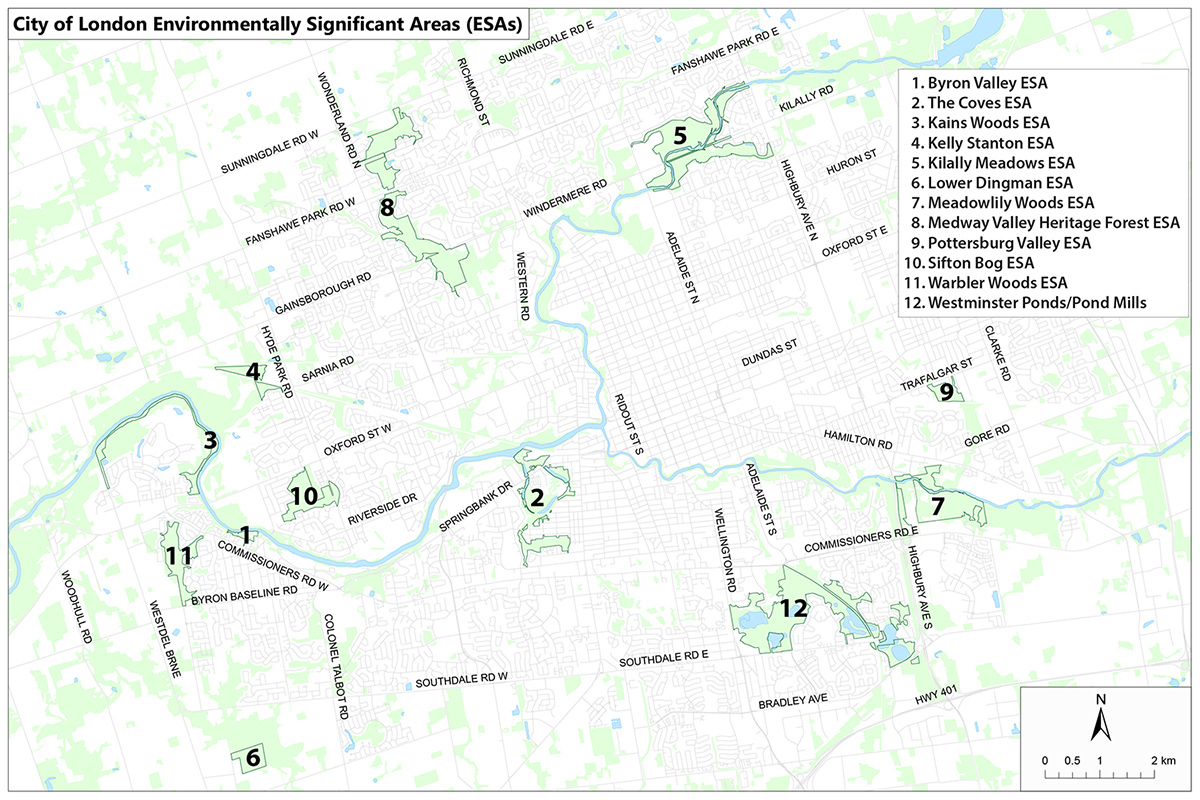1.5 Biodiversity in London
London, Ontario, is home to a rich diversity of plant and animal species. London is located in the Carolinian Zone, an ecozone characterized by deciduous forests and a temperate climate. Covering only the southern tip of Ontario, the Carolinian zone is the smallest in Canada. Although it only makes up around 1% of the country’s landmass, this zone supports a variety of species that can’t be found anywhere else in Canada. It has been estimated that 50% of the federally listed species at risk occur in Ontario’s Carolinian Zone (Environment Canada, 2014). Despite its ecological value, urban, agricultural and industrial expansion pressures have caused extensive wildlife habitat destruction. In parts of this zone, over 90% of the original forests are gone (Environment Canada, 2014).
To help preserve the remaining Carolinian forest, London has 21 natural areas designated as “Environmentally Significant Areas” (ESAs). These areas include wetlands, forests, and meadows, which provide significant habitats for wildlife. The Upper Thames River Conservation Authority (UTRCA) manages 12 ESAs. They work to control invasive species, restore habitat, protect species at risk and monitor the general health of these ecosystems. They also maintain trail systems throughout these areas, making them accessible for the general public to get outside and engage with nature (UTRCA, n.d.).

Local organizations and community groups are actively involved in conservation projects in London, such as tree planting, invasive species removal, and habitat restoration. These efforts are crucial for maintaining the city’s biodiversity.

